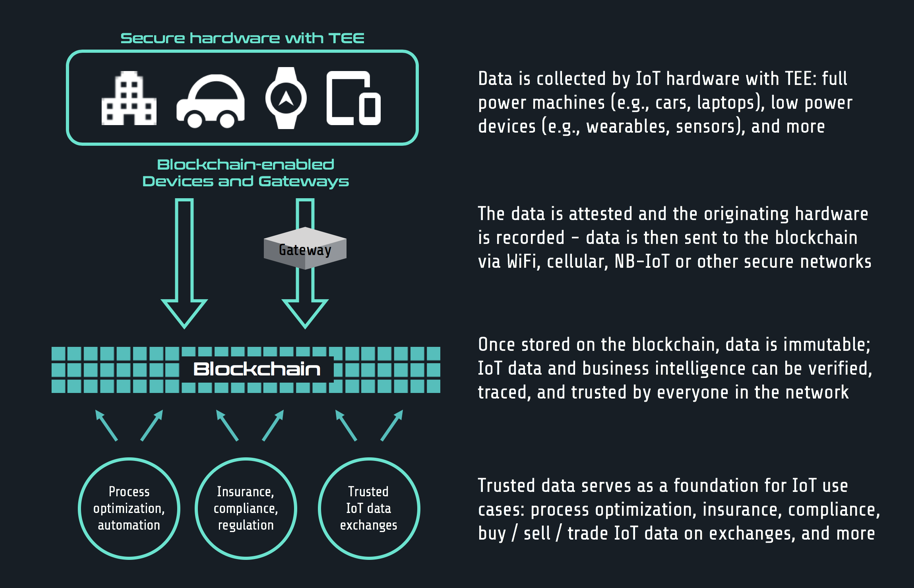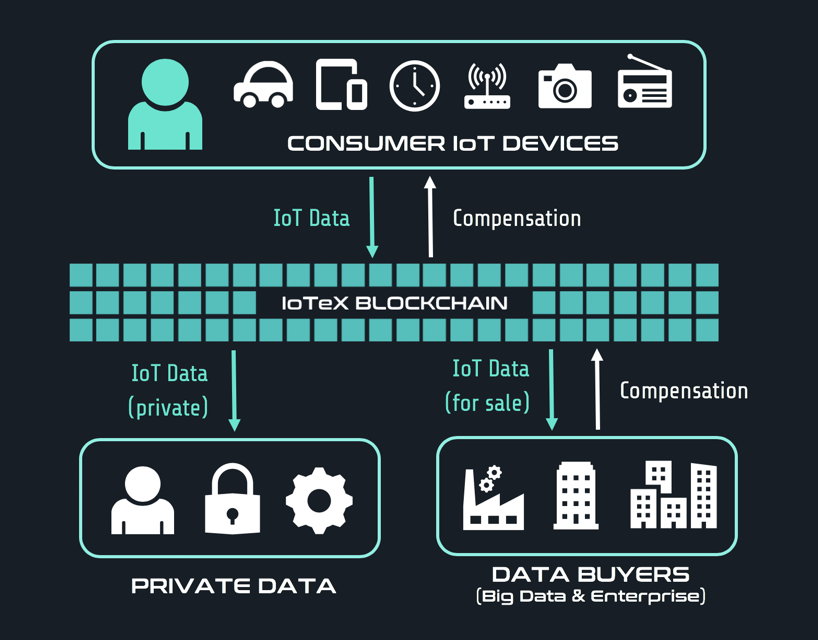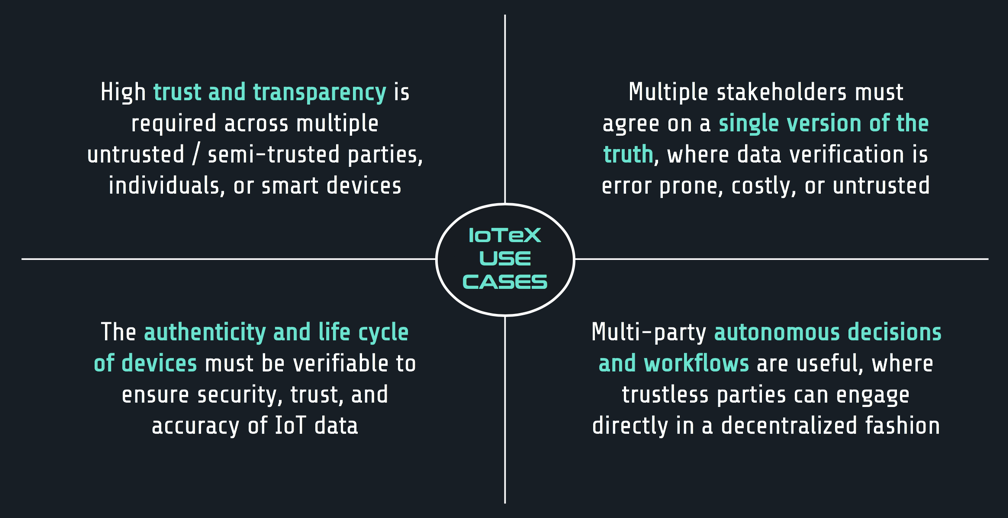The intersection of blockchain and the Internet of Things (IoT) has emerged as one of the most promising use cases for blockchain. We often hear about the autonomous machine-to-machine ecosystems that will one day run on blockchain, but what can we look forward to in the near future? Over the past few months, IoTeX has worked with our strategic partners and conducted independent research to answer this question across various industries. To enable near-term adoption, we must not only focus on the underlying blockchain technology, but also incentive structures that can drive change in consumer and enterprise behavior. We are excited to share our perspectives with you in our new “Blockchain & IoT” series, starting with this primer on what blockchain and IoT is all about.
Trusted data
The foundation of blockchain is decentralized trust — an immutable source of the truth. Today, IoT data cannot be fully trusted outside of a data owner’s domain, due to inability to verify that data was not manipulated before being sent, sold, or used by other parties. For example, autonomous car startups and ride sharing giants, such as Uber and Lyft, have no solution to share trusted mapping or ride data; instead, they gather and store similar datasets independently. How can we break down these monolithic data siloes and enable trust across parties? Blockchain & IoT.
Trusted execution environments (TEE) in today’s IoT devices can attest that data came from a specific device, and once this data is stored on the blockchain it is immutable and traceable. The combination of secure IoT devices and blockchain introduces a uniquely pure source of IoT data, which is known to come from a specific source and be non-manipulated. New business models centered around this trusted IoT data will soon emerge — data can be bought, sold, shared, and used across otherwise untrusted parties. Near-term use cases will differ between consumers and enterprises, which we detail below.

Consumer use cases
Driving consumer adoption of blockchain must begin with shifting data ownership back to the consumer. Today, the narrative in the crypto world is “decentralization and data privacy will drive consumer adoption”. However, privacy-enabled payments dApps (e.g., Zcash) have not attracted large user bases and only 1% of transactions are sent with full privacy. Why do consumers not care? Decentralization and privacy alone are not compelling enough to drive consumers away from the seamless user experience of traditional offerings. These benefits must be complemented with something that consumers actually care about today — compensation for their data.
If “data is the new gold”, then IoT devices are the gold mines. Connected devices (e.g., wearables, mobile phones, smart home devices) constantly produce data and are the gateways / recordkeepers of our physical and digital activities. Even though consumers own these devices, the underlying valuable data is owned by device manufacturers / tech giants, who often mistreat and sell our data. The combination of IoTeX’s IoT-enabled blockchain and well-designed incentives will be the catalyst to provide optionality in consumer data management, such as whether to keep personal data (e.g., health, traffic / routes) private or sell it to third parties. Getting consumers comfortable with this concept is a prerequisite to more sophisticated use cases.

Enterprise use cases
Enterprise adoption of blockchain is already underway, especially in permissioned (private) blockchains. Unlike consumers, enterprises today care deeply about data privacy to maintain competitive advantage and protect their customers’ data. However, they also greatly value data sharing for non-proprietary data to feed data analytics / models. Accommodating these conflicting goals of both protecting and sharing data is something that cannot be achieved with permissioned blockchains, which cater to data management amongst fully trusted parties. The ability to use trusted IoT data from multiple untrusted parties, selectively expose proprietary data to specific parties, and keep other data fully private requires an IoT-compatible, public blockchain like IoTeX.
The most immediate blockchain & IoT use cases for enterprise will be centered around multi-party trust and data sharing, which enable various cost reduction and compliance / regulatory use cases. For example, using trusted data to automate multi-party workflows and prove compliance to defined rules and regulations will likely emerge in the next year. Before enterprises embrace and adopt public blockchains / DApps with token economies, blockchain companies must learn to develop solutions that complement existing systems / processes, not replace them (yet). We outline four characteristics of use cases that are well suited for blockchain & IoT in the figure below.

Don’t just tell me, show me!
The coming months will be extremely exciting for IoTeX, with our Mainnet Preview release in Q4 2018 and Mainnet Alpha release in Q1 2019. In parallel with our blockchain research & development, we are investing significant time and resources in proofs of concept to contextualize near-term use cases and develop building blocks for more complex use cases (e.g., machine-to-machine interaction). To date, we have successfully integrated several resource-constrained smart devices (e.g., locks, lights, sensors) to the IoTeX Testnet and experimented with various connectivity standards (e.g., cellular, LoRa, Z-Wave). Stay tuned to our official channels for more IoTeX perspectives and deep dives into blockchain & IoT use cases.
About IoTeX
IoTeX is the auto-scalable and privacy-centric blockchain platform for the Internet of Things (IoT). IoTeX’s global team is comprised of distinguished research scientists, top tier engineers, and experienced ecosystem builders. IoTeX is developing several in-house innovations to push the frontier of blockchain 3.0, including a blockchains-in-blockchain architecture for heterogeneous computing, Roll-DPoS consensus mechanism for high scalability, and lightweight privacy-preserving techniques. IoTeX is bringing autonomous device coordination to the masses by “connecting the physical world, block by block.”